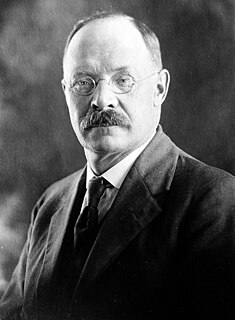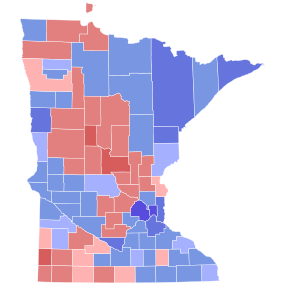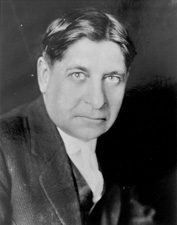
Magnus Johnson was an American farmer and politician. He served in the United States Senate and United States House of Representatives from Minnesota as a member of the Farmer–Labor Party. Johnson is the only Swedish-born person to serve in the U.S. Senate.

These are tables of congressional delegations from Minnesota to the United States House of Representatives and the United States Senate.

The Republican Party of Minnesota is the state affiliate of the Republican Party in the U.S. state of Minnesota.

The University of Minnesota Law School is the law school of the University of Minnesota, located in Minneapolis, Minnesota. The school confers four law degrees: a Juris Doctor (J.D.), a Master of Laws (LL.M.), a Master of Science in Patent Law (M.S.P.L.), and a Doctor of Juridical Science (S.J.D.). The J.D. program offers a number of concentration opportunities, as well as dual and joint degree options with other graduate and professional schools of the university.

The 1990 United States House of Representatives elections was an election for the United States House of Representatives in 1990 which occurred in the middle of President George H. W. Bush's term. As in most midterm elections, the President's Republican Party lost seats to the Democratic Party, slightly increasing the Democratic majority in the chamber. It was a rare instance, however, in which both major parties lost votes to third parties such as the Libertarian Party as well as independent candidates.

The 1918 United States House of Representatives elections were held November 5, 1918, which occurred in the middle of President Woodrow Wilson's second term.

Elections to the United States House of Representatives for the 35th Congress were held at various dates in different states from August 1856 to November 1857.

Arlen Ingolf Erdahl is an American commercial farmer and former politician. He served as a member of the Minnesota House of Representatives from 1963 to 1970, Minnesota Secretary of State from 1971–1975 and was a U.S. Representative from Minnesota, serving the first district from 1979–1983, in the 96th and 97th congresses.

James Beach Wakefield was a United States Representative from Minnesota.

The 1994 United States Senate election in Minnesota was held November 8, 1994. Incumbent Republican U.S. Senator David Durenberger decided to retire instead of seeking a third full term. Republican Rod Grams won the open seat. As of 2021, this is the last time the Republicans won the Class 1 Senate seat from Minnesota.

Minnesota became a new state in 1858 having already elected its first two members at-large in October 1857 to finish the current term. The state then held elections to the next term October 4, 1859.

A general election was held in the U.S. state of Minnesota on November 8, 2016. All seats in the Minnesota Senate and Minnesota House of Representatives were up for election as well as Minnesota's 10 presidential electors and Minnesota's eight seats in the United States House of Representatives. A primary election was held on August 9, 2016.

The 2018 United States Senate election in Minnesota took place on November 6, 2018, to elect a United States Senator from Minnesota. Incumbent Democratic–Farmer–Labor U.S. Senator Amy Klobuchar was reelected in a landslide. This election was held alongside a special election for Minnesota's other Senate seat, which was held by Al Franken until he resigned in January 2018. U.S. House elections, a gubernatorial election, State House elections, and other elections were also held.

The 1930 United States Senate election in Minnesota took place on November 4, 1930. Incumbent Republican U.S. Senator Thomas D. Schall defeated Einar Hoidale of the Minnesota Democratic Party and former U.S. Representative Ernest Lundeen of the Farmer–Labor Party of Minnesota to win a second term.

The 1936 United States Senate election in Minnesota took place on November 3, 1936. Incumbent Farmer–Laborite Elmer A. Benson, who had been temporarily appointed by Governor Floyd B. Olson in 1935 to fill the seat of the deceased Republican U.S. Senator Thomas D. Schall, opted to run for Governor rather than seek election to a full term or to fill the remainder of the unexpired term. Governor Olson won the Farmer–Labor primary for nomination to the full Senate term, but died of stomach cancer prior to the general election. In Olson's place, the Farmer–Labor Party ran U.S. Representative Ernest Lundeen, who went on to defeat former Governor Theodore Christianson of the Republican Party of Minnesota in the general election. A special election held on the same date elected Republican nominee Guy V. Howard to serve the remainder of Schall's unexpired term.

The 1940 United States Senate election in Minnesota took place on November 5, 1940. Incumbent U.S. Senator Henrik Shipstead defected to the Republican Party of Minnesota from the Farmer–Labor Party of Minnesota, and defeated former Governor Elmer Benson of the Farmer–Labor Party and John E. Regan of the Minnesota Democratic Party to win a fourth term.

The 2018 United States Senate special election in Minnesota took place on November 6, 2018, to elect a United States Senator from Minnesota to replace incumbent Democratic Senator Al Franken until the regular expiration of the term on January 3, 2021. Facing multiple accusations of sexual misconduct, Franken announced on December 7, 2017, that he would resign effective January 2, 2018. Governor Mark Dayton appointed Franken's successor, Tina Smith, on December 13, 2017, and she ran in the special election. This election coincided with a regularly scheduled U.S. Senate election for the Class 1 Senate seat, U.S. House elections, a gubernatorial election, State House elections, and other elections.

The 1864 United States presidential election in Minnesota took place on November 8, 1864, as part of the 1864 United States presidential election. State voters chose four representatives, or electors, to the Electoral College, who voted for president and vice president.

















